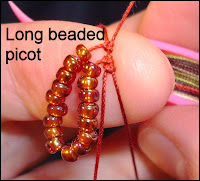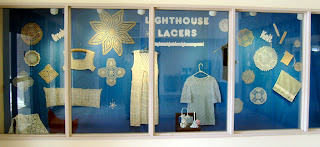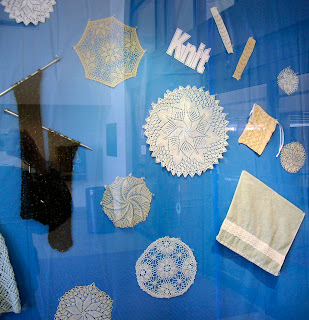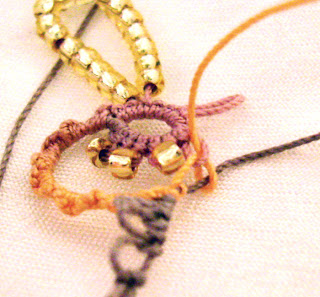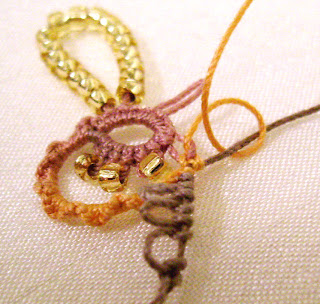
People have been raving so much about my
hand dyed thread, that I've decided to show some of the process I use here. I've linked many of the key words to Paula Burch's excellent dyeing website, so just click to get more information.
I learned what I do in a workshop class from an expert dyer, Nancy Simonson.
What I use is
Procion MX dye. which is a fiber reactive dye. You can read more about using these kinds of dye on
Paula Burch's page.
First I skein the thread using a skein winder, and then each skein has to be tied individually to keep it organized. This is the most time consuming part of the process. When the skeins are prepared, I can begin dyeing.
Rubber gloves are worn when working with the dye and the chemical solutions. All equipment used for dyeing must be kept ONLY for dyeing - NEVER used for food preparation! Children should not assist with dyeing until they are old enough to understand the precautions.
I begin by soaking the prepared skeins in a
soda ash solution. This is to raise the pH to the alkaline side, necessary when dyeing cotton.
A
dust mask is worn when mixing the dye powder into
urea water.
It is important to protect yourself from breathing in the dye powder! Once the dye is in liquid form, the dust mask can be removed. I then thicken the dye a little with
print paste.
The prepared skeins are laid out on plastic wrap and hand painted with the prepared dye, then rolled up into the plastic. I put these rolls into a plastic wash pan that I use only for dyeing purposes.
The instructions that come with the dye say to let it cure for at least 4 hours for pastel shades, and up to 24 hours for darker shades.
The temperature for fiber reactive dyes to work must be above 70 degrees F (or 21 degrees C). Since my house is not very warm in winter, my solution is to put the wrapped skeins into my gas oven that has a pilot light.
Then the dyed thread is ready to be rinsed!
I use cold water for the first rinse, to help prevent the excess dye from muddying up the colors on the skeins. Then I rinse
several times in warm water, then wash in
HOT water and
synthrapol, a detergent with a neutral pH, good at removing excess dye. Synthrapol is available where dye supplies are sold. I rinse again and repeat until the water is clear.
Then the skeins are hung up to dry, before being twisted into attractive skeins to show.

If I have done an extra-long skein, (for slow color changes) I rewind into a smaller skein.

 These colors seem better suited to autumn, but anyhow, the thread works well with the beads. I only did a small batch of "Knitty Gritty" a couple weeks ago as an experiment. I think I will need to do some more!
These colors seem better suited to autumn, but anyhow, the thread works well with the beads. I only did a small batch of "Knitty Gritty" a couple weeks ago as an experiment. I think I will need to do some more!


